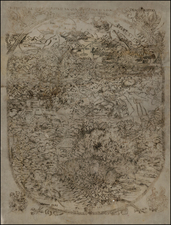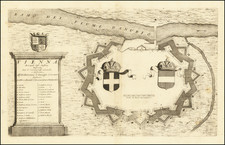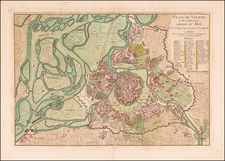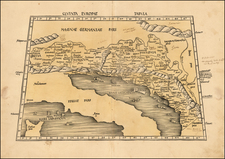Detailed map primarily covering the Tamsweg District withing the Salzburg Lungau.
The map is remarkably detailed, showing roads, trails, small villages and what appear to be hiking huts.
The Lungau is a region in the state of Salzburg, Austria, known for its rich history and cultural heritage. The area is nestled within the Eastern Alps, providing it with a distinct alpine character that has shaped its development over centuries.
Historically, the Lungau region has been inhabited since the Bronze Age, as indicated by archaeological finds. The Celts settled in the area around the 5th century BC, leaving behind traces that contribute to the understanding of Lungau's early history. The Romans subsequently influenced the region, as it lay near the important Roman road that connected the province of Noricum with the rest of the Empire.
In the Middle Ages, the Lungau became strategically significant due to its location on trade routes across the Alps. This period saw the construction of castles and fortifications, many of which have survived to the present day, adding to the region's historical landscape. The region was also a part of the Archbishopric of Salzburg, which ruled it as a sovereign territory, leading to the spread of Christianity and the establishment of numerous churches and monasteries.
The Lungau's economy historically relied on agriculture, mining, and ironworking, taking advantage of its natural resources. The harsh climate and mountainous terrain necessitated a resilient and self-sustaining local culture, which is reflected in the traditional customs and folk festivals that are still celebrated today.
After the secularization of the Archbishopric in the 19th century, the Lungau became part of the Austrian Empire and later Austria-Hungary. It remained relatively isolated until the development of rail and road networks in the late 19th and early 20th centuries, which opened it up to tourism and provided a vital link to the rest of Austria.
In the 20th century, especially after World War II, tourism became increasingly important for the Lungau, with its picturesque landscapes, traditional villages, and ski resorts attracting visitors from all over the world. The region has preserved its cultural heritage while developing sustainable tourism practices that honor its environmental treasures.
Today, the Lungau is recognized as a UNESCO Biosphere Reserve, highlighting its unique natural environment and the successful integration of human activity with nature conservation. The region continues to be known for its traditions, historic sites, and as a destination for outdoor activities throughout the year.













![(Italy and Austria) Carta geografica statistica postale dell’I.R. Monarchia Austriaca e dell’Italia [Statistical postal geographic map of the Imperial Royal Austrian Monarchy and of Italy]](https://storage.googleapis.com/raremaps/img/small/94038.jpg)
![[ Gratz ] Der Noerdliche Theil Von UnterSteyermark oder Der Graetzer Kreis Entworfen und Gezeichnet von Joseph Karl Kindermann. Gestochen zu Wien Von Christoph Juncker. Verlegt Bey Franz Xaver Miller. Buchhaendlern Zu Graetz, 1789.](https://storage.googleapis.com/raremaps/img/small/56853.jpg)